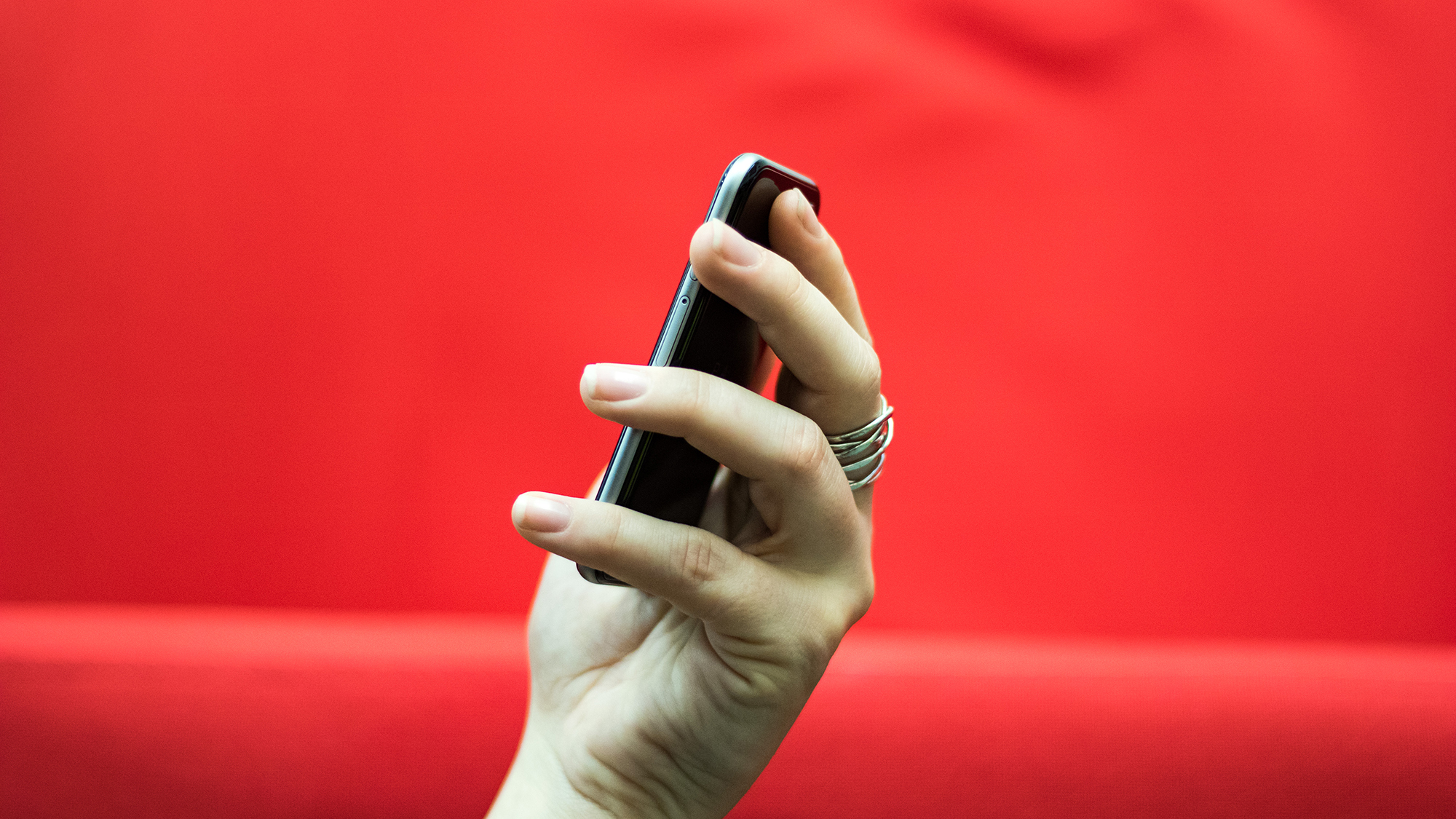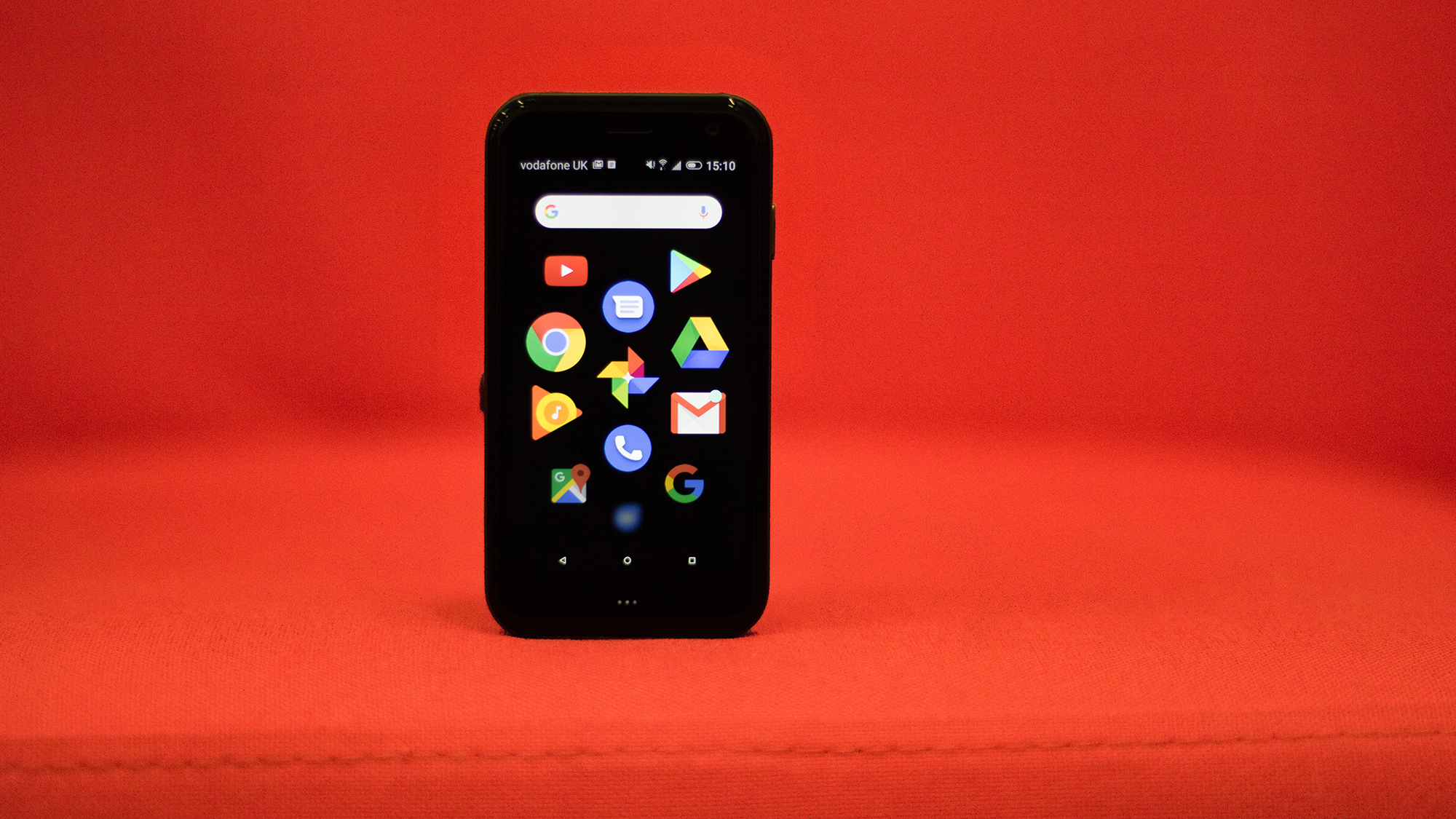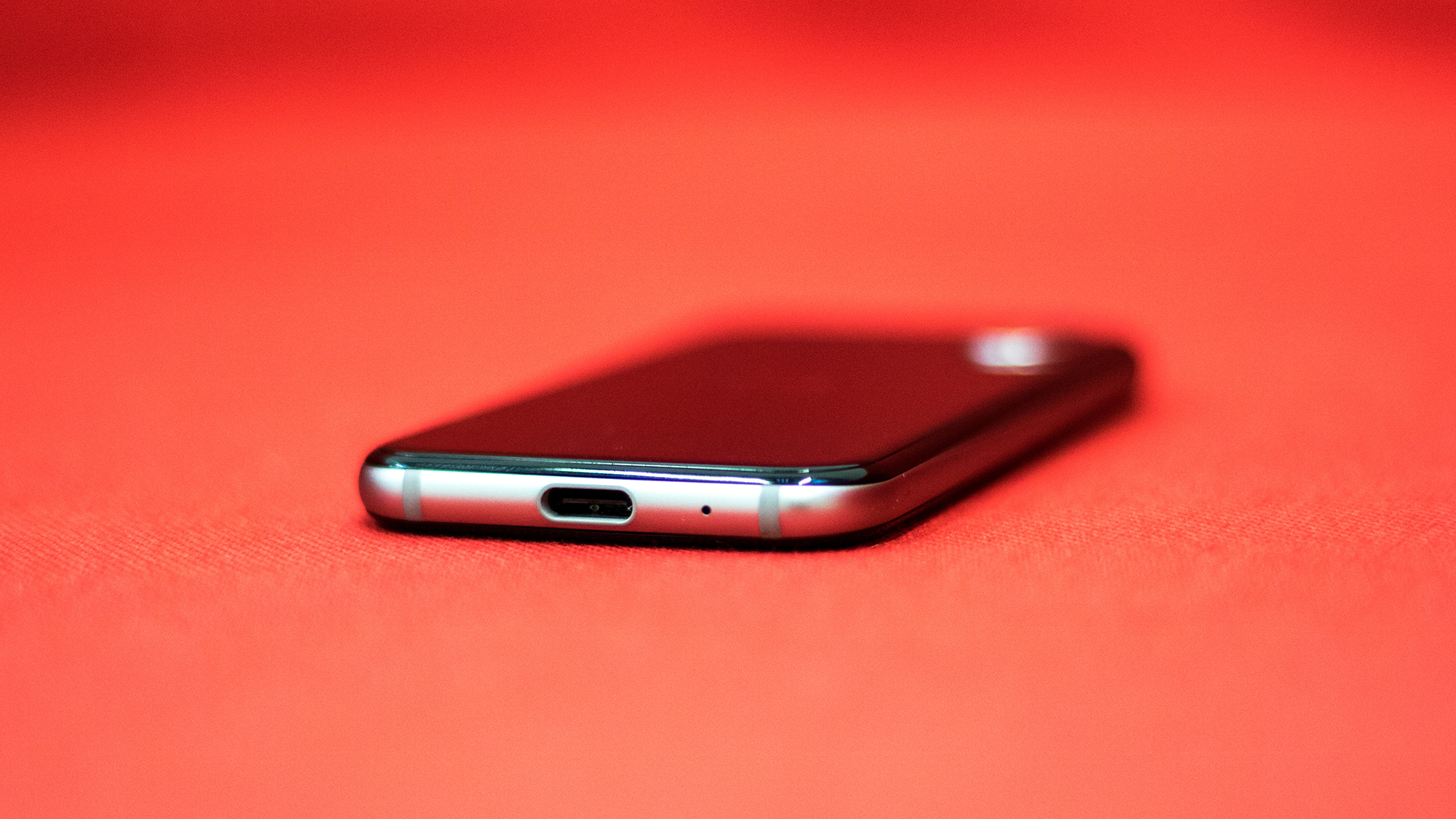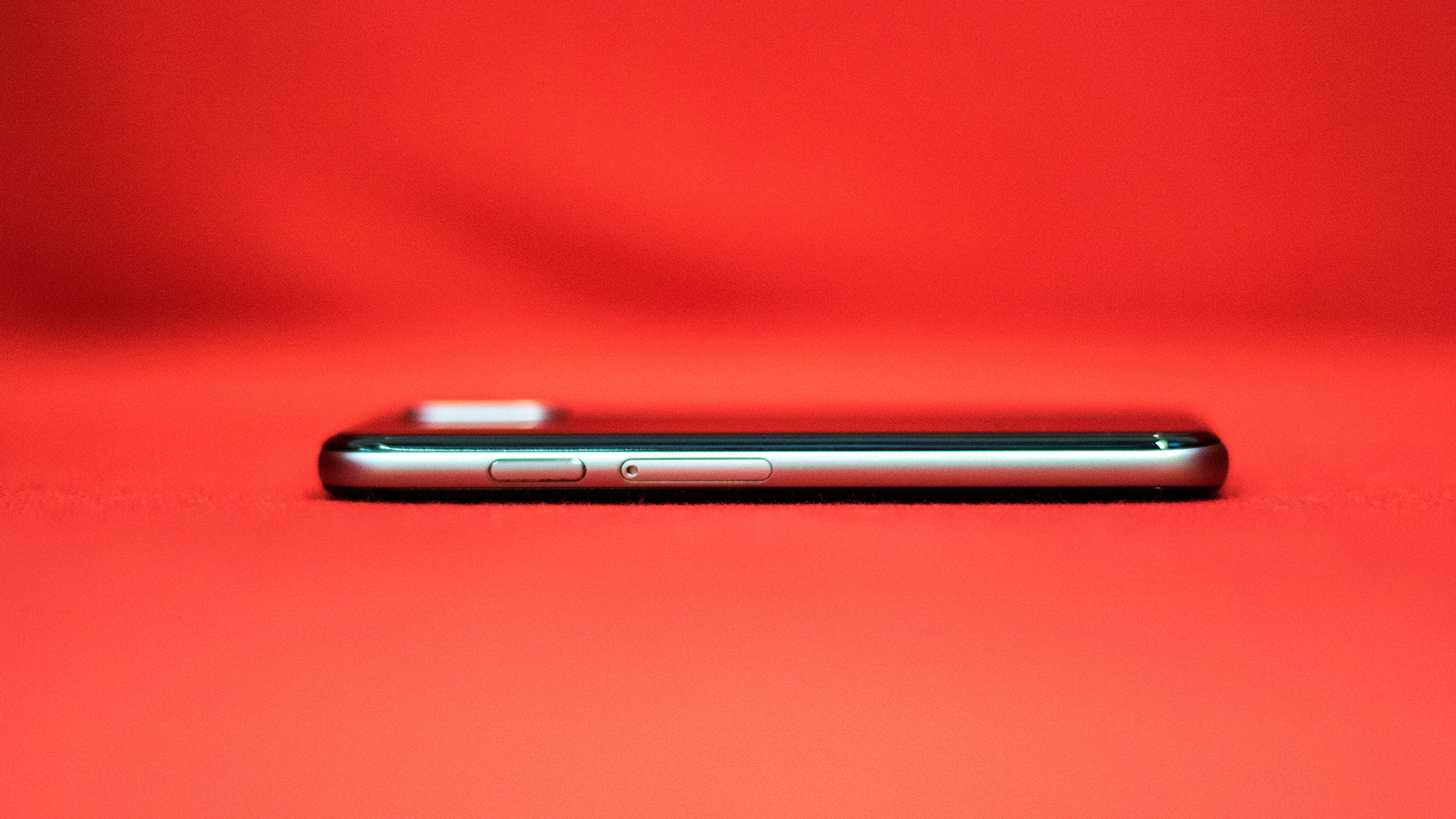Palm review: A bite-sized oddity
The newest Palm device is an interesting but flawed curio
The new Palm phone is one of the smallest, weirdest and, yet, most adorable devices we’ve ever seen. It’s designed to be a companion to your main smartphone and although it’s a cool idea and ta fun device, it’s just not enough to justify the high asking-price.
-
+
Unbelievably tiny; Super light; Attractive design
-
-
Terrible battery life; Locked to Vodafone; Expensive

If there's one thing we didn't expect to see in this day and age, it's a new device bearing the Palm brand. Once the go-to name in business productivity devices, Palm was an early leader in PDA and smartphone technology, before being unseated by newer rivals. Acquired by HP in 2010, the company was shuttered a year later.
The Palm brand was subsequently sold off to Chinese company TCL - a fate which was also shared by BlackBerry, another early smartphone pioneer. TCL has now resurrected the brand, starting with a new, and rather odd device. Simply dubbed the 'Palm', this tiny 3.3in phone-let is something of an odd duck.
It's marketed by Palm as a 'companion phone'. It shares the same number as your regular phone, and gets the same calls and texts, with the idea being that you can switch seamlessly between devices. For example, rather than taking your 6in smartphone with you on a run, you can simply grab this miniature one instead.
It's an interesting, if somewhat odd, idea, but sadly it's not quite ready yet; the functionality is powered by Verizon's NumberShare service in the US, but it's not available in the UK at present. Vodafone (which is the Palm's exclusive UK provider) has assured us that it's being worked on, but we haven't yet been given a specific release date.
You can use the Palm as a standalone phone, however - so how does this weird little device stand up on its own?
Palm Phone review: Design
Never has a phone been so aptly named - this little device genuinely fits in your palm. Measuring around 10cm tall and 5cm wide, the tiny Palm Phone is around the size of a credit card, weighing just 62g and with a mere 10mm thickness.

In fact, it's so small that you're liable to forget you have it on you; we had intermittent moments of panic where we feared we may have misplaced it, accustomed as we are to being able to feel the weight of our phone in our pocket.
Despite its diminutive size though, it's still surprisingly usable. App user interfaces remained legible and easy to navigate, and typing was still easy enough - although you'll likely want to make use of things like autocorrect, dictation and Swype to avoid errors.
Visually speaking, there's something incredibly cute about the Palm. Its tiny size is oddly endearing, and it'll definitely earn you a lot of attention from friends and colleagues.
First and foremost, it reminds us of a very small iPhone, with the flat glass backing, anodized aluminium frame and even the camera placement all evoking Apple's classic aesthetic. Even the software is reminiscent of Apple, although it's aping the company's watchOS user interface rather than iOS.
Palm Phone review: Display
At just 3.3in, the Palm's screen seems almost comically tiny when compared to 6.5in monsters from the likes of Samsung and Huawei, but don't forget that it's only fractionally smaller than the original iPhone's display.
Thankfully, the Palm substantially outclasses the iPhone with a 1,280 x 720 resolution and although that might seem low, you really don't need anything more impressive when the display is this small. Similar to the way a 4K screen on a 13in laptop is a battery-sapping extravagance, a 1080p screen on a 3.3in phone is wildly unnecessary. Video still looks great, and we never found ourselves squinting to make anything out.

It's surprisingly high-quality, too. We found it covered 82% of the sRGB colour gamut, with a brightness of 512cd/m2 - a figure that many flagships can't reach. The 1,654:1 contrast ratio is creditable, too.
Palm Phone review: Specs and hardware
The Palm may be small in stature, but that isn't reflected in the specs. The device is powered by a Qualcomm Snapdragon 435, an octa-core chip with a 1.4GHz clock speed, and 3GB of RAM. This isn't what we'd call 'flagship-grade' hardware, but it's more impressive than we were expecting to see in such a small device and it puts in a perfectly acceptable performance. Apps were speedy enough to open and operate, although it was more sluggish than we're used to modern high-end devices being.
Still, it achieved respectable scores in our benchmark tests, with single- and multi-core scores of 684 and 2,849 in Geekbench 4. That's quite substantially behind devices using Qualcomm's latest high-end Snapdragon 845 CPU, but don't be discouraged; it's still perfectly usable from a performance perspective.
As a standalone device, the Palm is still quick enough to pass muster, but this phone is designed to be a secondary backup device that covers the basics without having to use cutting-edge components, and through that lens, it's more than capable.
Palm Phone review: Battery life
Sadly, battery life is the one critical area where3 Palm's usability does falls down. Because the phone's chassis is so small, there's only room for a 800mAh battery which, coupled with the mid-range components, results in a deeply disappointing lifespan.
In our battery tests, the Palm lasted only 3hrs 37mins - a downright dismal result that is one of the worst we've recorded in years. In theory, it should last more than that in real-world use, and it did - but not by much. In fact, we found that we were having to charge it after less than half a day of use, lest it die on us.

This raises a somewhat tricky issue for us. This is a hugely frustrating flaw in a standalone device and one that pretty much undoes all of its appeal. Again, however, it makes more sense when you remember that the Palm was never designed to be used all day, every day - the idea is that you're only meant to use it for bursts of a few hours at a time, which makes the pathetic battery capacity a little more understandable.
We could see it being much less of an issue if and when Vodafone rolls out the promised syncing features, but until then, the Palm's battery is a deal-breaking flaw. A sub-five hour battery life might be good enough if you're only taking it on the odd evening out, but for an everyday device, it's a big problem.
Palm Phone review: Camera
Surprisingly enough, the camera isn't a complete write-off. It's not what we'd call top-notch; the pictures look like they were taken by a smartphone camera from about five years ago. On the other hand, it's competent enough if all you're doing is capturing the odd picture for posterity or your social media feed.
One thing that is worth pointing out is that, like the phone's exterior, the camera interface is oddly reminiscent of Apple's iPhone, even down to the icon designs. This doesn't have any measurable impact on the quality, of course, but it's interesting to note.
Palm Phone review: Features
You might expect such a small phone to be lacking in features, as the manufacturer attempts to save space by cutting down on any unnecessary extras. You would, however, be wrong. The Palm actually has a surprisingly robust range of features, including expandable storage up to 256GB and IP68 waterproofing.
In fact, the only notable absence from its feature-set is NFC. That, sadly, means no Google Pay, which would have made a real case for the Palm as an on-the-go companion - not only can you leave your big phone at home, you can even leave your wallet! Sadly, it's not to be.

Elsewhere, there are a couple of handy features, like the so-called 'Life Mode', which disables notifications while the screen is turned off. If you're the kind of person who views your phone as more of an annoying distraction than a constant companion, this may appeal to you, but we found little use for it.
There's also a slightly odd one-button navigation system, which replaces the on-screen navigation bar with a single capacitive button. Tap once to go back, long-press to switch between recent apps, and double-tap to return to the home screen. It's optional, so you can still use the traditional Android navigation system if you like, but we found ourselves getting used to it surprisingly quickly.
Palm Phone review: Verdict
The Palm phone is a deeply strange device. We were unable to use it in the way it was designed - as a backup device that you can swap out your primary phone for seamlessly - but we can definitely see the appeal of doing so. In fact, if we had access to that functionality, we're pretty confident that it would have become an indispensable part of our every day routine.
In fact, even as a standalone device, we were incredibly taken with the Palm. It's adorably small size is utterly charming, and its performance and feature-set are robust enough to see it through most challenges. The biggest problem we had was the short battery life, but that's likely to be a non-issue if you're using it for its intended purpose.
One thing to point out, however, is Android's annoying habit, when you turn on a device for the first time in a while, of serving you every notification you missed while it was off. If you do end up using the Palm on an infrequent basis, get used to an absolute avalanche of notifications every time you turn it on again.
The price is even more of an issue. The Palm is retailing for 350 as part of a pay-as-you-go tariff, which is a rather high price for something that's designed to be a secondary device to supplement your existing smartphone. You're paying a premium for the fact that it's so tiny, but it's still not great value.
Honestly, we really want to like the Palm. Aside from the fact that it's nice to see the Palm name attached to a new device, the itsy-bitsy form factor really is endearing, and the idea of having a secondary phone-let for emergencies is a very interesting one.
On top of that, the amount that the manufacturer has crammed into its featherweight chassis is impressive enough to merit an Innovation Award. However, the poor battery life means that it's not fit for purpose as a standalone device and without the functionality to use it in the way it was designed for, we can't say whether or not it succeeds at that either.
The Palm, then, is a device with intriguing potential but one that feels somewhat incomplete. One to watch, certainly, but until Vodafone rolls out its number-sharing technology, it's probably one to avoid for now.
Verdict
The new Palm phone is one of the smallest, weirdest and, yet, most adorable devices we’ve ever seen. It’s designed to be a companion to your main smartphone and although it’s a cool idea and ta fun device, it’s just not enough to justify the high asking-price.
| Processor | Octa-core 1.4GHz Qualcomm Snapdragon 435 |
| RAM | 3GB |
| Screen size | 3.3in |
| Screen resolution | 1,280 x 720 |
| Pixel density | 445 ppi |
| Screen type | IPS |
| Front camera | 8-megapixel |
| Rear camera | 12-megapixel |
| Flash | Single LED |
| Dust and water resistance | IP68 |
| 3.5mm headphone jack | No |
| Wireless charging | No |
| USB connection type | USB Type-C |
| Storage options | 32GB |
| Memory card slot (supplied) | microSD (256GB) |
| Wi-Fi | 802.11ac |
| Bluetooth | 4.2 |
| NFC | No |
| Cellular data | 4G |
| Dual SIM | No |
| Dimensions (WDH) | 96.5 x 50.5 x 10 mm |
| Weight | 60g |
| Operating system | Android 8.1 (EMUI 9) |
| Battery size | 800mAh |
Get the ITPro daily newsletter
Sign up today and you will receive a free copy of our Future Focus 2025 report - the leading guidance on AI, cybersecurity and other IT challenges as per 700+ senior executives
Adam Shepherd has been a technology journalist since 2015, covering everything from cloud storage and security, to smartphones and servers. Over the course of his career, he’s seen the spread of 5G, the growing ubiquity of wireless devices, and the start of the connected revolution. He’s also been to more trade shows and technology conferences than he cares to count.
Adam is an avid follower of the latest hardware innovations, and he is never happier than when tinkering with complex network configurations, or exploring a new Linux distro. He was also previously a co-host on the ITPro Podcast, where he was often found ranting about his love of strange gadgets, his disdain for Windows Mobile, and everything in between.
You can find Adam tweeting about enterprise technology (or more often bad jokes) @AdamShepherUK.
-
 Third time lucky? Microsoft finally begins roll-out of controversial Recall feature
Third time lucky? Microsoft finally begins roll-out of controversial Recall featureNews The Windows Recall feature has been plagued by setbacks and backlash from security professionals
By Emma Woollacott Published
-
 The UK government wants quantum technology out of the lab and in the hands of enterprises
The UK government wants quantum technology out of the lab and in the hands of enterprisesNews The UK government has unveiled plans to invest £121 million in quantum computing projects in an effort to drive real-world applications and adoption rates.
By Emma Woollacott Published
-
 Businesses are taking their eye off the ball with vulnerability patching
Businesses are taking their eye off the ball with vulnerability patchingNews Security leaders are overconfident in their organization’s security posture while allowing vulnerability patching to fall by the wayside.
By Jane McCallion Published